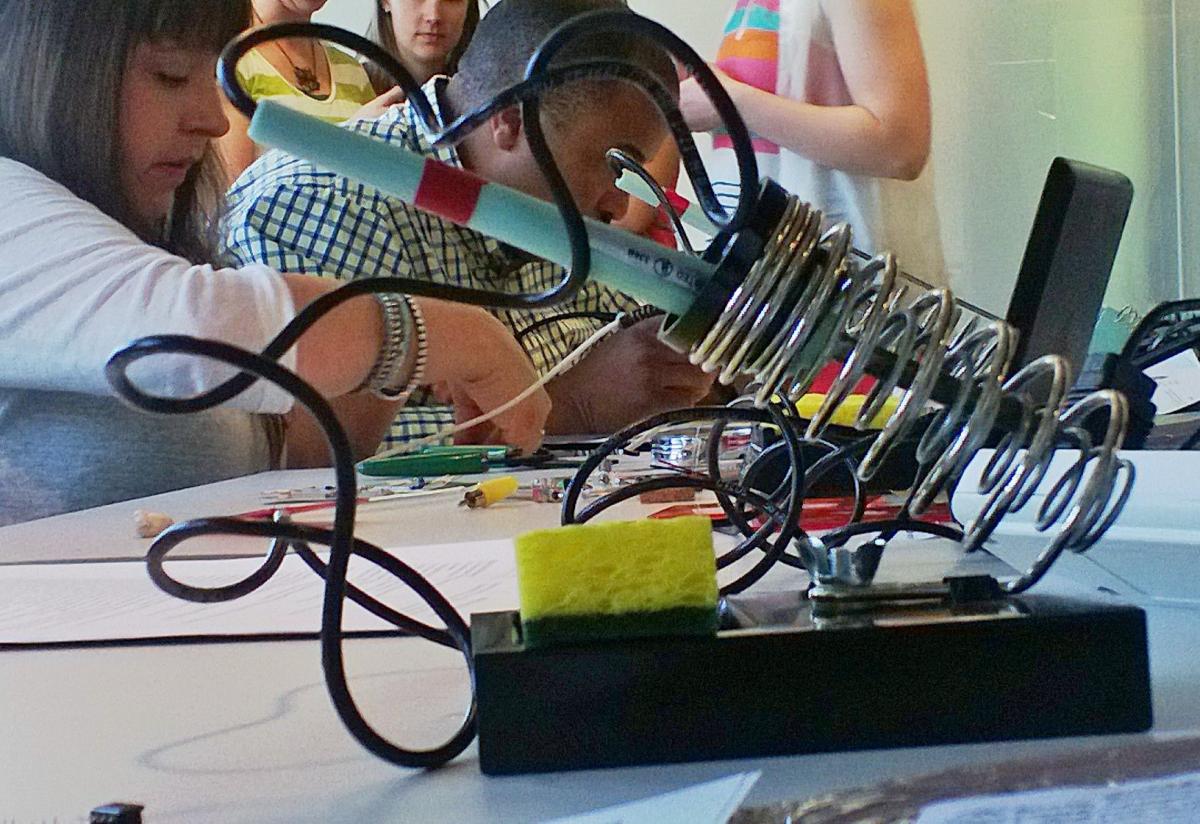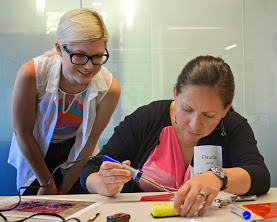 Neuroscientist Greg Gage has made SpikerBoxes famous. His TED-Ed talk from March 2012 has more than half a million views, which is pretty impressive given that it's not a mainstream topic. A SpikerBox demonstrates the principles of electrophysiology, the study of the electrical properties of cells and tissues, using the leg of a cockroach, or other insects and creatures that lack a backbone or spine.
Neuroscientist Greg Gage has made SpikerBoxes famous. His TED-Ed talk from March 2012 has more than half a million views, which is pretty impressive given that it's not a mainstream topic. A SpikerBox demonstrates the principles of electrophysiology, the study of the electrical properties of cells and tissues, using the leg of a cockroach, or other insects and creatures that lack a backbone or spine.
Stephanie Seeman, graduate student in the Neurobiology & Behavior program at the University of Washington, uses SpikerBoxes in her outreach efforts with students in the Seattle area. “It gives kids the chance to do what researchers have studied since 1660,” she said during a recent workshop at the Center for Sensorimotor Neural Engineering for seven middle school and high school teachers. “They’re also a great way to teach about neuroscience,” she said.
The CSNE is an Engineering Research Center that is funded by the National Science Foundation.
Seeman received a grant from the CSNE earlier this year to conduct the neural engineering workshop, which had a test run at the beginning of May with a group of students from Cleveland High School.
Teachers from four areas schools attended the workshop. First, they learned about the history of electrophysiology (which includes Mary Shelley’s Frankenstein and two sets of Nobel Prize-winning scientists). Seeman then provided details on Backyard Brains, a company launched by two former graduate students from the University of Michigan. Its aim? To create low-cost SpikerBox kits that can help kids learn more about the inner workings of the nervous system.
 The group then spent the next several hours assembling a SpikerBox, which involves intricate soldering and a fair amount of patience. Once the boxes were assembled, teachers tested the contraption by dialing up some music on a tablet and watching (in most cases) the tiny cockroach leg move as a way of demonstrating the electrical connections that take place in our own bodies.
The group then spent the next several hours assembling a SpikerBox, which involves intricate soldering and a fair amount of patience. Once the boxes were assembled, teachers tested the contraption by dialing up some music on a tablet and watching (in most cases) the tiny cockroach leg move as a way of demonstrating the electrical connections that take place in our own bodies.
Seeman said this type of workshop is more helpful to teachers in the long run, instead of donating ready-to-go devices. “I do this all the time in the lab,” she said. “I’ve learned through that experience that I understand more how things work, and am able to troubleshoot better when I’ve built it myself.”
Two of the participants in the free workshop took part in the Research Experience for Teachers (RET) program last summer. Four teachers will take part in the RET this summer in Seattle; they also attended the workshop. Each teacher who attended the workshop will receive five SpikerBoxes to use in the classroom with students.
Seeman said she hopes to continue holding these types of workshop in the years to come. Fellow graduate students Bethany Kondiles and Katherine Manbeck helped with the workshop, teaching and helping to assemble SpikerBoxes.
